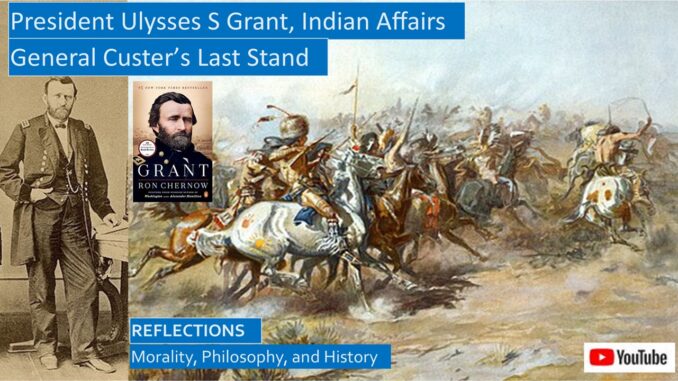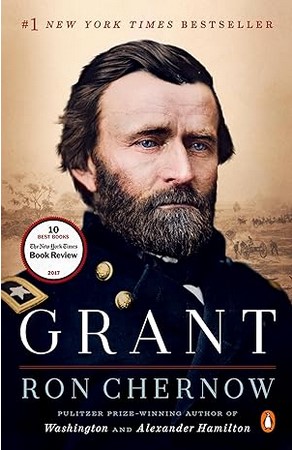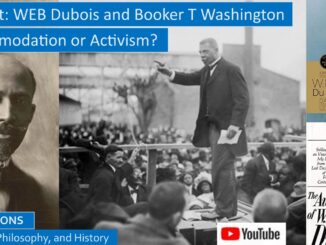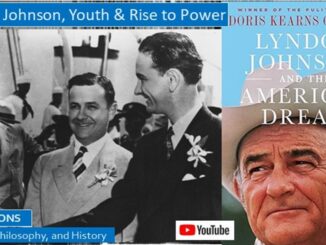
Why was President Grant sympathetic to the plight of the Indians? Did he seek to preserve Indian culture?
How did President Grant balance the treaty obligations to the Indian tribes with demands from white settlers and miners?
Why did President Grant appoint Eli Parker, a full-blood Seneca Chief, to manage Indian Affairs?
What was President Grant’s impression of George Armstrong Custer? Why didn’t they get along?
Who was at fault for the massacre of Custer’s calvary troops at the Battle of Little Bighorn?
YouTube video for this blog: https://youtu.be/e3o94piy3rQ
EARLY LIFE OF ELY PARKER, SENECA SACHEM
President Grant was sympathetic to the plight of the Indians, and he appointed his old friend, Eli Parker, a full-blood Seneca Chief, to manage Indian Affairs. Grant’s biographer Ron Chernow writes: “Ely Parker, who grew up on an Indian reservation in upstate New York, was a full-blooded Seneca Iroquois chief of the Six Nations. Trained as a civil engineer, he was a man of giant girth with jet-black hair, penetrating eyes, and exceptional strength.”

Ely Parker was born in 1828 to a prominent Seneca family, who enrolled him in a missionary school. His father was a respected Seneca chief who fought for the United States in the War of 1812. Ely read law for a New York law firm for the required three years but was not permitted to sit for the bar exam since he was not technically a United States citizen. With help from a family anthropologist friend who wanted to learn about their culture, he was accepted to study engineering at a college in Troy, New York. After serving his tribe as a diplomat and interpreter, negotiating land and treaty rights, he was made a sachem or chief of the Senecas.
Ulysses S Grant first met Ely Parker when he was clerking in his father’s store in Galena, Illinois, on the banks of the Mississippi River. When the Civil War began, Ely was told Indians could not enlist. But with Grant’s recommendation, he was able to enlist as an engineer with a captain’s rank.[1] When Grant was promoted to general, Ely Parker joined his military staff as an adjutant.[2]
After Robert E Lee agreed to Grant’s generous surrender terms, he handed his handwritten notes to his military aide Ely Parker to make several copies for the generals to sign. Chernow notes: “When introduced to the swarthy Parker, Lee blushed deeply, eyeing tensely his complexion.” “An onlooker thought Lee momentarily offended since he believed ‘a mulatto had been called on to do the writing as a gratuitous affront.’ Evidently Lee relaxed when realized Parker was a Native American.”
“I am glad to see one real American here,” Lee ventured, shaking his hand. To which Parker retorted memorably: “We are all Americans.”[3]
In his first inaugural address, President Grant “advised Native Americans that their days as a hunting, gathering people were numbered and that he favored ‘civilization, Christianization, and ultimate citizenship’ for them.”[4]
SENECA ELY PARKER APPOINTED COMMISSIONER OF INDIAN AFFAIRS
Grant’s former military aide General Ely Parker was the first Native American to be appointed Commissioner of Indian Affairs. Chernow writes, “With nearly three hundred thousand Indians in the” country, “Parker’s job was unfathomably complex. Indian communities reeled under remorseless threats as railroad, stagecoach, and telegraph lines pushed steadily westward, crisscrossing Indian territory. As settlers traversed Indian hunting grounds, they set off deadly clashes. Gradually Indian tribes were shoved off the Great Plains, where they had hunted buffalo, and herded into drastic new patterns of settlement.”
“Aided by Parker, Grant embarked on a Peace Policy with the Indians that was full of high-minded intentions. Outraged by injustices committed against Native Americans, he aimed to clean up a corrupt system of licensed government traders who cheated the Indians on their supplies of food, clothing, and shelter and grew indecently wealthy through” persistent graft. These lucrative jobs were prime sources of congressional patronage.”
“By the end of his first year in office, Grant had ferreted out many crooked Indian agents, replacing them with Quakers and honest army officers, eliciting howls from congressmen who had once controlled those jobs. At Grant’s request, Congress also formed a ten-man Board of Indian Commissioners, a civilian watchdog agency” “to police wrongdoing in the Indian bureau and reform its procedures.”
Many Union generals fighting the Indians “betrayed a punitive, bloody attitude, exemplified by General Sheridan’s infamous remark: ‘The only good Indians I know are dead.’ Convinced that Native Americans must succumb to a stronger race of white men, Sheridan reviled them as ‘the enemies of our race and of our civilization,’ who had to be confined on reservations or killed. During one Indian war in 1867, Sherman advised Sheridan, ‘The more Indians we kill this year, the fewer we would have to kill next year.’”
Grant was more sympathetic to the Indian cause than any previous President, blaming white settlers for many tensions. Soon after Appomattox, Grant observed that “the Indians require as much protection from the whites as the whites do from the Indians. My own experience has been that” Indians would have caused little trouble “but for the encroachment and influence of bad whites.”
Grant and Parker pursued a Peace policy that encouraged Indians to abandon their roving lifestyle and settle on reservations. Under this quixotic vision, never accepted by most Indians, they would become productive farmers, building houses, farmhouses, and churches. Ely Parker and Grant ended the treaty system in 1871, believing that Indian tribes were wards of the state rather than independent tribal nations. But Grant knew that politically frightened settlers demanded federal protection from Indian raids, as both sides committed atrocities as white settlers advanced on the Great Plains. It was difficult to both be fair to the Indians and also protect the interests of the railroads and white settlers. But in his December 1869 annual message to Congress, Grant warned: “A system which looks to the extinction of a race is too abhorrent for a Nation to indulge in.”
Chernow writes: “Government relations with Indians soured in January 1870 after the US Cavalry under Major Eugene Baker massacred 173 Blackfeet Indians in the Montana Territory, mostly women, children, and the elderly. Many were roasted alive when their tepees were set ablaze or hacked apart with axes.” “This led to Congress banning military officers as Indian agents, a move that was partly Congress’ way of reclaiming the lucrative patronage powers it had lost.”
Unfortunately, in 1871 Ely Parker’s Bureau of Indian Affairs was accused of corruption when Indian contracts were let without competitive bids. This accusation was likely due to a racially inspired vendetta. Although a Congressional oversight committee later exonerated Parker, he offered his resignation to his old acquaintance, which President Grant regretfully accepted.[5]
Afterwards, Ely Parker initially prospered while investing in the stock market but lost his fortune in the Panic of 1873. Through his social connections, he was hired for an office job with the Board of Commissioners for the New York City Police Department. He lived his last years in poverty.[6] These were the days before Social Security.
PRESIDENT GRANT MEETS WITH SIOUX CHIEFS IN THE WHITE HOUSE
Grant received an explosive letter from Professor Marsh of Yale that exposed the Indian agents at the Red Cloud Agency who were supplying the Sioux “putrid pork, inferior flour, rotten tobacco, and other shoddy goods.” Grant was so concerned that he convened a commission to travel to Nebraska to investigate these charges. The Secretary of the Interior had ignored Marsh’s charges, he was pressured by Grant to resign.
Chernow writes: In 1875, “Grant met Sioux leaders at the White House and entreated them to relocate farther south where, he claimed, the climate was better, the grass richer, the buffalo more abundant. He explained the extreme difficulty of interdicting white settlers, predicting the problem would only intensify and spur violent clashes.”
Chernow notes: “Despite Grant’s evident concern for their welfare, he was offering them a suicide pact for their culture, urging that he wanted to see their ‘children attending schools’ and future generations ‘speaking English and preparing themselves for the life of the white man.’”
“My interest is in seeing you protected,” Grant assured them, “while I have the power to make treaties with you which shall protect you.” But the Sioux must “settle the question of the limits of your hunting grounds and make preliminary arrangements to allow white persons to go into the Black Hills.”
GEORGE CUSTER’S LAST STAND IN THE BATTLE OF LITTLE BIGHORN
There was a gold rush in the Black Hills, which were sacred to the Sioux, and they would never agree to allow whites to mine those sacred hills. But Grant was being pressured by settlers and miners, so he gave the Sioux warrior Sitting Bull a deadline of January 1876 to move onto the reservation, or he would send Union troops to compel them to move. Part of that force was George Armstrong Custer.
Custer graduated from West Point at the bottom of his class, amassing 726 demerits, which may have been a record. In the Civil War, Custer’s reckless bravery as a cavalry officer earned a promotion to general, one of the youngest generals serving. He served under General McClellan and lost 257 men while fighting at Gettysburg.
Gettysburg: Ordinary Soldiers and Generals Pickett and Longstreet Remember the Bloody Charges
https://seekingvirtueandwisdom.com/gettysburg-ordinary-soldiers-and-generals-pickett-and-longstreet-remember-the-bloody-charges/
https://youtu.be/ibTm3l-C8VQ
At the Battle of Appomattox, Custer captured the Confederate supply train, which prompted General Robert E Lee to surrender.
Robert E Lee Surrendering to Grant at Appomattox, Ending the American Civil War
https://seekingvirtueandwisdom.com/surrender-at-appomattox-courthouse-ending-the-american-civil-war/
https://youtu.be/_Dr7qia6XkQ
Chernow notes: “George Custer was vain, headstrong, and narcissistic, the very antithesis of Grant. A Democrat who had idolized George McClellan, he had often been insubordinate, intrigued against superiors, lobbied for his personal advancement, and gambled and womanized. He had also supported Andrew Johnson, opposed Grant for President, and worked against Reconstruction.”
Custer had a reputation for cruelty to both Indians and to his own men. Chernow notes: “In 1867, Custer was court-martialed for ordering deserters to be shot and Grant thought he was guilty. The following year, Custer and his cavalry obliterated an Indian village,” “wantonly murdering more than a hundred Southern Cheyenne, including women and children.”
Grant told Sherman and Sheridan that he did not want Custer to lead a force in the campaign against the Sioux Sitting Bull and Crazy Horse. Custer had the chutzpah to request a personal interview with Grant at the White House to appeal this decision, but Grant refused to meet with him. But with Sheridan’s intervention, Grant gave in and allowed Custer to join the expedition against the Indians.
Chernow writes: “As the nation celebrated its centennial on July 4th, reports filtered back that Custer and all 263 of his men in the Seventh Cavalry had been annihilated by Lakota Sioux and Northern Cheyenne warriors along the Little Bighorn River in southern Montana, their mutilated bodies strewn among the hills.”
“Custer’s body was found naked, a bullet hole in his head, a gash in his thigh, an arrow piercing his penis. He was supposed to be marching toward a rendezvous with” other generals, “but he arrived too soon and failed to wait for other troops. He confronted alone an enormous Indian force with overwhelming numbers.”
In a newspaper interview, Grant placed the blame for the massacre on Custer: “I regard Custer’s massacre as a sacrifice of troops, brought on by Custer himself, that was wholly unnecessary.” “He was ordered to meet” with the other generals, but instead he “enters upon a forced march of eighty-three miles in twenty-four hours, meeting the Indians alone.”
Chernow notes, “Whoever was to blame for the Little Bighorn calamity, the national response was a ferocious outcry for Indian blood, bordering on the genocidal.” The editor of the Nation, who endorsed Grant’s Peace Policy towards the Indians, spoke for many when he said: “Our philanthropy and our hostility tend to about the same end, and that is the destruction of the Indian race.” President Grant felt compelled to ask Congress to expand the cavalry by 2,500 men to pacify these Indians.[7]
CONCLUSION
Chernow concludes: “Grant had a complicated relationship with the American West.” “He handed over millions of acres to settlers and miners and promoted the growth of the railroads. At the same time, sensitive to natural beauty, he established Yellowstone as the first national park on March 1, 1872. President Lincoln had signed a bill in 1864 that permitted California to preserve the Yosemite Valley and the giant sequoias,” “but it was Grant who initiated the national park system.”[8]
DISCUSSING THE SOURCES
We discussed best-selling Ron Chernow’s biography, Grant, in our reflections on his conflicts with President Johnson and his role as Union general in Reconstruction during Johnson’s presidency.
[1] https://en.wikipedia.org/wiki/Ely_S._Parker and Ron Chernow, Grant (New York: Penguin Books, 2017), Chapter 6, p. 117.
[2] Ron Chernow, Grant, Chapter 17, Ulysses the Silent, p. 362.
[3] Ron Chernow, Grant, Chapter 23, Dirty Boots, pp. 509-510.
[4] Ron Chernow, Grant, Chapter 28, Trading Places, pp. 631-632.
[5] Ron Chernow, Grant, Chapter 30, We Are All Americans, pp. 737-739, and Chapter 34, Vindication, pp. 728-736.
[6] https://en.wikipedia.org/wiki/Ely_S._Parker
[7] Ron Chernow, Grant, Chapter 38, Saddest of the Falls, pp. 829-837 and https://en.wikipedia.org/wiki/George_Armstrong_Custer
[8] Ron Chernow, Grant, Chapter 34, Vindication, p. 739.




Be the first to comment